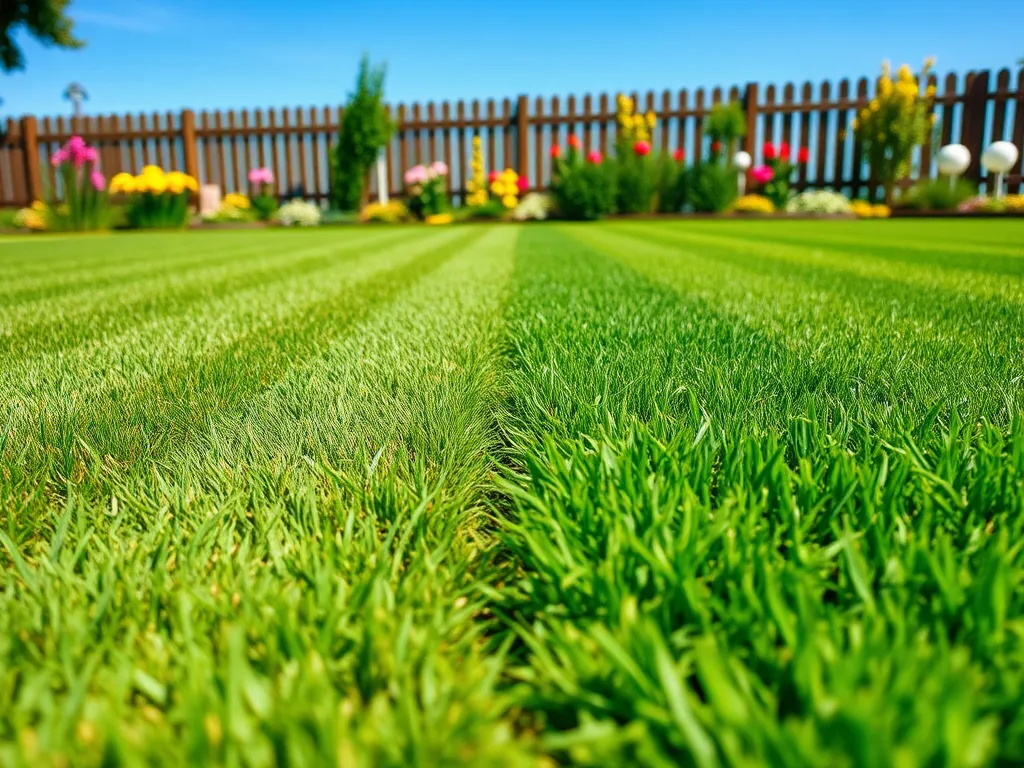Discover How Cutting Height Affects Lawn Health and Appearance

Effects of Cutting Height on Lawn Health and Appearance
The cutting height of grass directly influences its overall health and appearance. Understanding the effects of cutting height on lawn health and appearance is crucial for maintaining a lush and vibrant lawn. Correct mowing practices can enhance growth, improve color, and contribute to better weed and disease resistance.
Different grass types have optimal cutting heights that support their growth patterns. For instance, if grass is cut too short, it hampers its ability to photosynthesize effectively, leading to weak growth and a lackluster appearance. On the other hand, leaving it too long can result in a messy look while also providing habitat for pests and weeds.
Additionally, the effects of cutting height on lawn health and appearance can vary throughout the seasons. During the growing season, certain grasses thrive at specific heights, while in the fall and winter, a taller grass can better tolerate cold and snow, ensuring healthier regrowth in spring.
Implementing strategies for lawn density improvement can transform an ordinary yard into a lush, green paradise.
Furthermore, understanding the relationship between cutting height and irrigation plays a significant role in lawn maintenance. Cutting grass too short can lead to heightened water stress, while cutting it at the recommended height helps retain moisture in the soil, further enhancing lawn vigor.
Ultimately, a well-informed approach to cutting height can lead to a thriving lawn that is not only aesthetically pleasing but also resilient to environmental stressors. The following sections will delve deeper into specific aspects of optimal cutting heights, impacts on lawn health, aesthetic considerations, best practices for mowing heights, and common myths surrounding this essential lawn care practice.
Optimal Cutting Heights
Optimal cutting heights vary based on grass types; for instance, cool-season grasses like Kentucky bluegrass should be cut to a height of 2.5 to 4 inches, while warm-season grasses such as Bermuda grass typically do best at 1 to 3 inches. Following these guidelines ensures that the grass maintains robust health and a vibrant appearance.
Understanding the root development impact is essential for fostering healthier and more resilient plants in landscaping projects.
Cutting height significantly impacts root growth as well. Grass cut at optimal heights allows for deeper root systems, which improves drought resistance and nutrient uptake. When grass is mowed too low, it can stunt root development, leading to a shallow root network that is less capable of withstanding environmental stressors.
Seasonal considerations are also crucial when determining cutting heights. In the spring, grasses generally benefit from a slightly higher cut to encourage thick growth, while in late summer or fall, cutting slightly lower can prepare the lawn for winter dormancy. Adjusting for temperature changes and growth cycles can drastically improve lawn health.
Enhancing a garden's drought resistance ensures sustainability and longevity, particularly in regions facing water scarcity.
Impact on Lawn Health
Cutting grass too low can lead to several negative effects on turf health. Short grass struggles to photosynthesize effectively, which results in weakened plants and increased susceptibility to diseases. Excessive heat and drought can also severely impact low-cut grass, leading to brown patches or even death.
There is a direct relationship between cutting height and weed growth. Taller grass can shade the soil, making it difficult for many weed species to establish. Conversely, cutting grass too short exposes the soil to more sunlight, creating a favorable environment for weed germination and growth.
Additionally, turf that is routinely cut at low heights is often more susceptible to diseases, particularly fungal infections. By maintaining appropriate cutting heights, homeowners can reduce their lawn's exposure to such threats, leading to healthier, more resilient grass.
Aesthetic Considerations
The cutting height has a pivotal influence on the lawn's overall color and texture. Grass that is cut to the appropriate height retains a rich green color and luxurious texture, whereas grass cut too low can appear stressed and yellowed. Maintaining ideal cutting heights promotes an aesthetically pleasing appearance.
There is a remarkable visual difference between various cutting heights. A well-manicured lawn at the right height presents a uniform look, whereas uneven cutting can lead to patchiness and an unkempt appearance. Properly adjusted cutting height ensures a smooth, neat lawn that boosts curb appeal.
To enhance curb appeal, homeowners should aim for a consistent mowing pattern and height. Regular maintenance at optimal heights not only improves the visual aspects of a lawn but also signals to neighbors and visitors that the property is cared for, contributing positively to property value.
Best Practices for Mowing Height
Mowing frequency is essential to lawn health, and it should correlate with cutting height. Generally, mowing 1/3 of the grass blade at a time is ideal, which promotes healthy growth. Adjusting the mowing schedule according to grass growth rates will ensure that lawns maintain an optimal look and health.
Using appropriate tools and equipment is vital for maintaining an optimal cutting height. Sharp mower blades provide clean cuts, while well-maintained mowers ensure that grass isn't ripped or torn. Regularly checking and adjusting mower settings can help maintain consistency in cutting height, contributing positively to lawn health.
To adjust mower height settings, homeowners should familiarize themselves with their equipment. Most mowers have settings for grass height, and it’s important to adjust these based on the type of grass and current growth rate. Regular monitoring and adjustments will lead to a healthier, more beautiful lawn.
Common Myths About Cutting Height
There are many myths regarding low mowing practices, such as the belief that cutting grass short will reduce mowing frequency. In reality, this often results in weaker grass that requires more frequent care, contradicting the idea that less frequent mowing is advantageous.
Another common misconception is that cutting height has no bearing on lawn care. In truth, proper cutting height is critical for maintaining a healthy lawn. Ignoring this can lead to unnecessary stress and care challenges.
Lastly, many assume that frequent low cutting encourages lush growth. However, frequent low cutting actually stresses the lawn, leading to potential damage and increased vulnerability to pests and diseases, proving that optimal cutting height is key for a thriving lawn.
